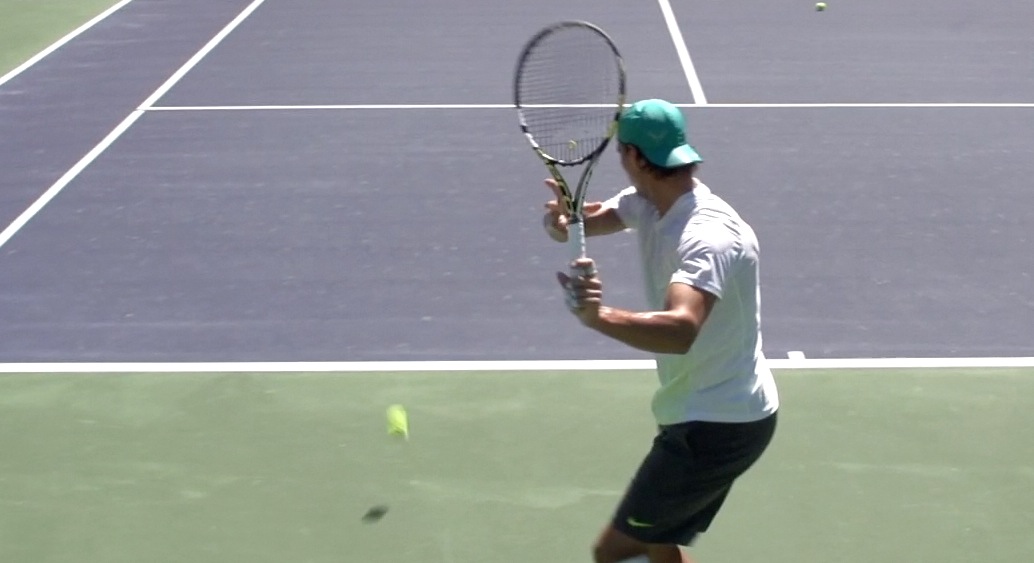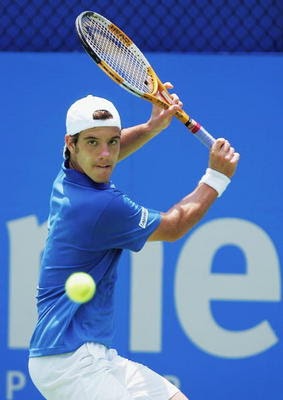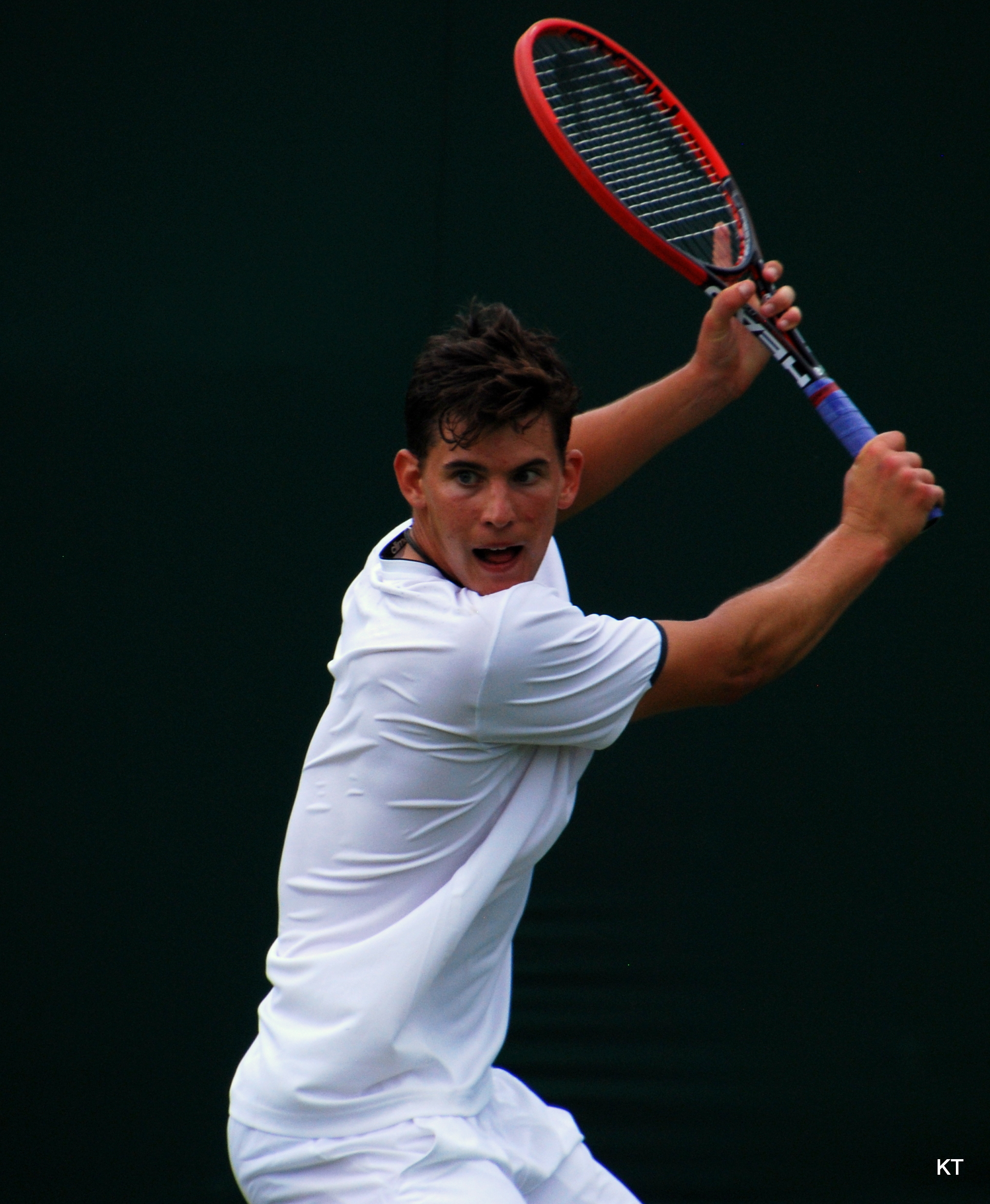Lorenzo Musetti is the latest youngster to capture the attention of tennis fans after his semi-final run in Acapulco last week. I caught some of the action and was impressed with his athleticism and tennis IQ. A modern-day athletic Gasquet comes to mind with his deep positioning, heavy strokes, and trigger backhand at times. His forehand is textbook ‘NexGen’ and I believe this shot will hold him back from achieving anything great in the sport. An analysis of forehands is discussed.
The last 20 years has seen the technological aspect of the game stall; the string and racquet materials used today are much the same that was available to players at the turn of the millennium. Despite this, many of the young ‘NextGen’ players coming through have a forehand that is distinct to their generation where the racquet tip 'lags' or faces their opponent and then the ground for much of the take back (most notably Tiafoe, Sock, Kyrgios, but also including Musetti, Kokkinakis, and Khachanov) due to their curled wrist. This creates a whip effect, where the lagged racquet head is snapped through violently, and coupled with some of the extreme grips we see from Sock, Tiafoe, Khachanov, and Kyrgios, the spin and power can be impressive. However, this NextGen swing is inferior to the typical modern forehand we have seen employed by Nadal, Djokovic, and Federer. A comparison of their initial take backs can be seen below. NEXTGEN



Modern forehands are distinct from this—the racquet tip maintains an upward angle through take back





I don’t think this has been due to a concerted effort on the part of coaches; much of this evolves naturally—a players technique and style is shaped from the environment they learn in. So if the equipment has not changed in these years, why has this occurred? Whilst pro-level equipment has remained relatively static, the development of equipment catered for juniors has increased massively, allowing kids to start with 19-inch frames and work their way up a few inches at a time. The same is true of weight; many frames are specced to 250/60/70/80/90 grams in ever finer adjustments. This is in stark contrast to 20-30 years ago. Back then, junior frames were not carried by every brand and most frames started at 300 grams; it wasn’t uncommon for juniors (even as young as 12 or 13) in my day (early 2000’s) to use tour frames (Prestige’s, 200G’s, Pro Staff’s) that weighed in the 330-340 gram range with a swingweight (SW) above 330. This is no longer the case. Most juniors play with lighter frames on slower, bouncier courts and fluffier balls; the result is an environment that rewards lagged swings that can generate more power and spin and handle higher balls whilst not being tested by quick courts. So what you get is faster improvement in Goldilocks conditions, but with ceiling effects in the pros; the swing has multiple drawbacks. The outline of this is broken down into two main issues; difficulty increasing SW, and difficulty in timing faster shots (return of serve, quicker and/or lower bouncing courts).


You can see from this data that the weights of the NextGen are far below that of the recent crop of top forehands, with an average SW difference of around 23, and if Sock is removed from the data (due to his chocked grip) the average SW difference approaches 27. A higher SW has advantages (if you can wield it effectively; over five-sets you need favourable technique) over a low SW all things being equal; more stability (and therefore more control), more power (a feeling of ‘easy’ power). It is interesting to note there is a correlation between SW and career high ranking observed from a group of 50 players I analysed below. Of course, it may entirely be that better athletes can handle higher SW and that is why they are ranked higher, but nonetheless I think there is a case for to be made that a higher SW will improve results.

2) Timing
The second issue the curled NextGen wrist encounters is one of timing. Timing the ball depends on a number of factors; speed of shot, pace of court, spin rates, how early you try to take it, and whether you are blocking the ball versus swinging through it. Whilst there is no statistic that relates specifically to timing the ball, return stats versus first serves is an indicator of some ability to handle pace. This is of course, a very imperfect comparison of an elite Grand Slam grouping against young players yet to prove themselves, however the stark difference in this area was interesting. Some notes I have observed having watched them; Kyrgios’s forehand return grip is far more conservative than his actual forehand. I would wager he nearly uses an eastern forehand grip to block returns in. Khachanov’s forehand grip is so extreme he uses the same side of the racquet face for forehands and backhands during rallies, yet doesn’t do so on returns when time is of the essence. Sock on the other hand, uses the same side of the racquet on all topspin shots. Djokovic is the only player in the modern forehand group with something a little more extreme than semi-western perhaps. Federer and Gonzalez are the only one-handers in the group and they often chipped their backhand returns (Gonzalez a lot more) but their return percentages are still quite high. Rafa stands very far back and his return stats are surely due to his clay court prowess. Still, at events where he has held the baseline, he still usually comes over his forehand return.
The curled wrist forehand struggles as the pace and speed of the shot increases; it has one more moving part that makes it that little bit harder to execute. As usual, the NextGen forehand is best suited to conditions where the player has a ball that is not too low or not too fast.

The last 20 years has seen the technological aspect of the game stall; the string and racquet materials used today are much the same that was available to players at the turn of the millennium. Despite this, many of the young ‘NextGen’ players coming through have a forehand that is distinct to their generation where the racquet tip 'lags' or faces their opponent and then the ground for much of the take back (most notably Tiafoe, Sock, Kyrgios, but also including Musetti, Kokkinakis, and Khachanov) due to their curled wrist. This creates a whip effect, where the lagged racquet head is snapped through violently, and coupled with some of the extreme grips we see from Sock, Tiafoe, Khachanov, and Kyrgios, the spin and power can be impressive. However, this NextGen swing is inferior to the typical modern forehand we have seen employed by Nadal, Djokovic, and Federer. A comparison of their initial take backs can be seen below. NEXTGEN



Modern forehands are distinct from this—the racquet tip maintains an upward angle through take back



I don’t think this has been due to a concerted effort on the part of coaches; much of this evolves naturally—a players technique and style is shaped from the environment they learn in. So if the equipment has not changed in these years, why has this occurred? Whilst pro-level equipment has remained relatively static, the development of equipment catered for juniors has increased massively, allowing kids to start with 19-inch frames and work their way up a few inches at a time. The same is true of weight; many frames are specced to 250/60/70/80/90 grams in ever finer adjustments. This is in stark contrast to 20-30 years ago. Back then, junior frames were not carried by every brand and most frames started at 300 grams; it wasn’t uncommon for juniors (even as young as 12 or 13) in my day (early 2000’s) to use tour frames (Prestige’s, 200G’s, Pro Staff’s) that weighed in the 330-340 gram range with a swingweight (SW) above 330. This is no longer the case. Most juniors play with lighter frames on slower, bouncier courts and fluffier balls; the result is an environment that rewards lagged swings that can generate more power and spin and handle higher balls whilst not being tested by quick courts. So what you get is faster improvement in Goldilocks conditions, but with ceiling effects in the pros; the swing has multiple drawbacks. The outline of this is broken down into two main issues; difficulty increasing SW, and difficulty in timing faster shots (return of serve, quicker and/or lower bouncing courts).
- SW issues


You can see from this data that the weights of the NextGen are far below that of the recent crop of top forehands, with an average SW difference of around 23, and if Sock is removed from the data (due to his chocked grip) the average SW difference approaches 27. A higher SW has advantages (if you can wield it effectively; over five-sets you need favourable technique) over a low SW all things being equal; more stability (and therefore more control), more power (a feeling of ‘easy’ power). It is interesting to note there is a correlation between SW and career high ranking observed from a group of 50 players I analysed below. Of course, it may entirely be that better athletes can handle higher SW and that is why they are ranked higher, but nonetheless I think there is a case for to be made that a higher SW will improve results.

2) Timing
The second issue the curled NextGen wrist encounters is one of timing. Timing the ball depends on a number of factors; speed of shot, pace of court, spin rates, how early you try to take it, and whether you are blocking the ball versus swinging through it. Whilst there is no statistic that relates specifically to timing the ball, return stats versus first serves is an indicator of some ability to handle pace. This is of course, a very imperfect comparison of an elite Grand Slam grouping against young players yet to prove themselves, however the stark difference in this area was interesting. Some notes I have observed having watched them; Kyrgios’s forehand return grip is far more conservative than his actual forehand. I would wager he nearly uses an eastern forehand grip to block returns in. Khachanov’s forehand grip is so extreme he uses the same side of the racquet face for forehands and backhands during rallies, yet doesn’t do so on returns when time is of the essence. Sock on the other hand, uses the same side of the racquet on all topspin shots. Djokovic is the only player in the modern forehand group with something a little more extreme than semi-western perhaps. Federer and Gonzalez are the only one-handers in the group and they often chipped their backhand returns (Gonzalez a lot more) but their return percentages are still quite high. Rafa stands very far back and his return stats are surely due to his clay court prowess. Still, at events where he has held the baseline, he still usually comes over his forehand return.
The curled wrist forehand struggles as the pace and speed of the shot increases; it has one more moving part that makes it that little bit harder to execute. As usual, the NextGen forehand is best suited to conditions where the player has a ball that is not too low or not too fast.

Last edited:




